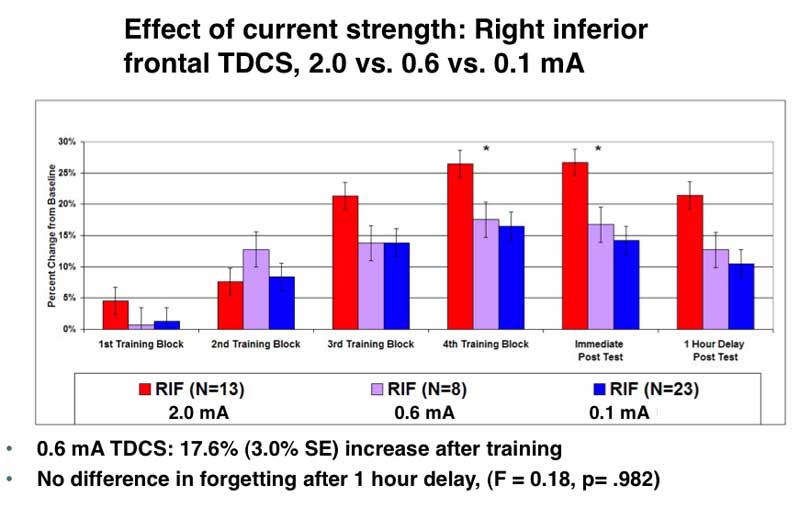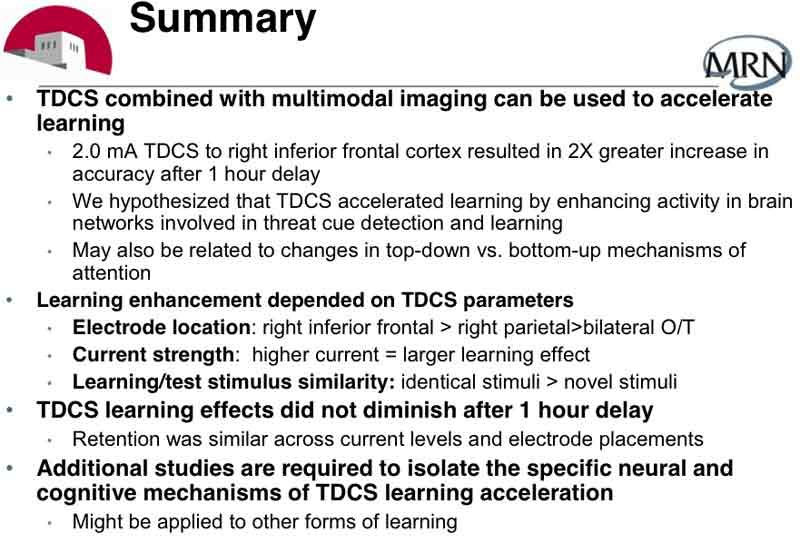From (I believe) a talk in 2010 given at the Organization for Human Brain Mapping by Dr. Vince Clark, director of the Clinical Neuroscience Center at the University of New Mexico (and previously, director of the Mind Research Network). The slides reference a study where tDCS was used in training subjects to accurately detect hidden and camouflaged objects, as in a military setting. What caught my eye, something I don’t recall seeing anywhere else, is the comparison of effectiveness of different amounts of current. It begs the question: If 2 mA is more effective than 1 mA, what about 3 mA? [As Peter points out in his comment, the chart actually contrasts effects of 2 mA and 0.1 mA as a control. I do still think it’s a good question: Why 2 mA?]. Much I don’t understand in the slides without the talk to go along with, but have a look pdf, Quick View. And a link (abstract) to what appears to me a follow-up study. P.S. After tracking all this down I can’t tell you how frustrating it is to not be able to access the full texts of these studies, especially when we (NiH, DOD) paid for them. If you can get me a copy I would
greatly appreciate it.


